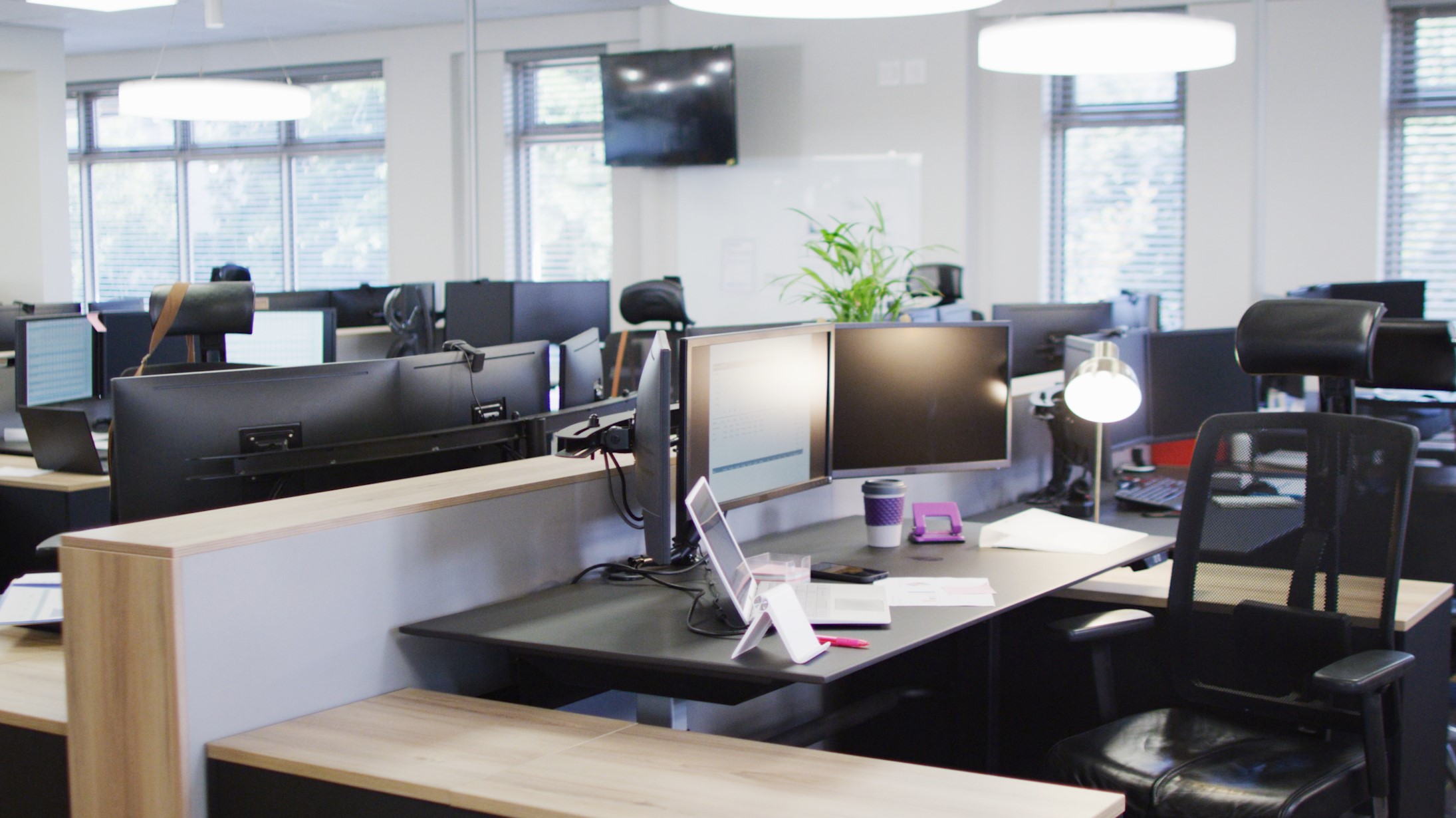
Commercial buildings devour energy, with hidden inefficiencies lurking in every corner. But just how much do everyday appliances contribute to energy waste? And can you reclaim control over these hidden costs?
Non-domestic buildings in England and Wales use around 127 TWh of electricity annually. This is enough to power a blinding 1.2 billion 100-watt lightbulbs all at once. UK businesses spend over £20 billion on energy every year, with nearly half of that used solely to power buildings. But this isn't a lost cause. Simple efficiency measures can dramatically reduce these numbers to uncover significant energy cost savings.
The silent suspects
Don't be fooled by their size. A whopping 40% of your building’s electricity bill hides in the shadows among small gadgets and forgotten chargers. This silent power drain adds up faster than you think without you realising it.
Office desks
Office desks are ground zero for hidden energy waste. Laptops, monitors, and chargers left plugged in when not in use are the most obvious place to find and eliminate wasted energy.
Hot water taps
Don't let your office tea break overheat your energy budget. Hot water taps are a prime suspect for being left on over-boiling water when nobody is in the building.
Electric heaters
Buildings contribute to cleaner operations thanks to electric heating, with modular and temporary buildings using electric heaters on fused spurs exclusively. But keeping an empty building warm quickly vaporises those sustainable gains.
Printers
The humble printer can be found in most commercial buildings. But these workhorses often slumber in standby mode, quietly draining power. Some printers use just as much energy in standby as when it is in active use.
Bottle fridges
It might surprise you to learn that bottle fridges, a common sight in premium offices, hospitality spaces, events venues, and science environments, can be safely turned off for periods, slashing energy use.
These everyday items, when left idle or inefficiently used, become energy vampires, draining your budget and creating avoidable carbon emissions.
Stop small power waste in three steps:
- Plug detectives: Take inventory of everything plugged in, then locate those rarely used or inefficient culprits.
- Power shutdown: Turn off idle devices, optimise standby modes, and adopt smart tools to automate energy-saving routines.
- Measure the impact: For long-term savings, monitor your progress and visualise the positive impact of your efforts on your savings and the planet.
Uncover the energy inefficiencies in your building and reclaim control. Explore how to transform your energy efficiency and cut costs by at least 20%.
